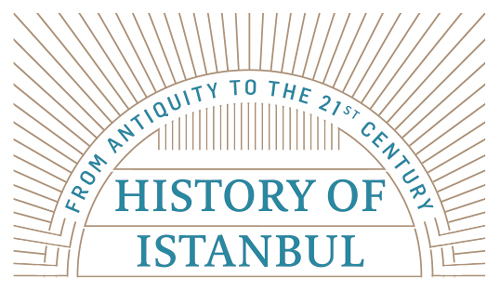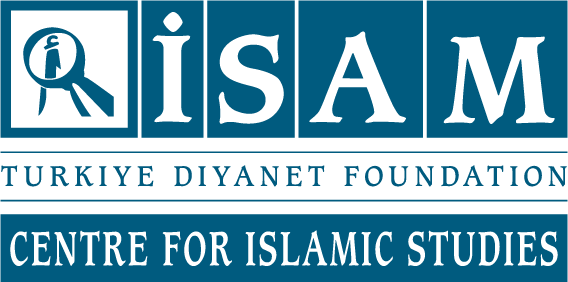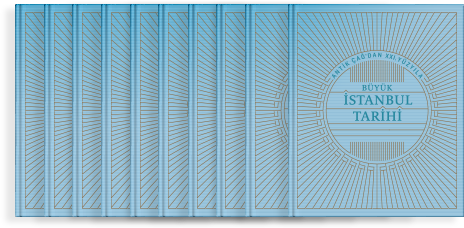Mühürzade Mehmet Nuri Bey (b. 1886 Divriği, Sivas, d. 13 November, 1957 Istanbul) was a groundbreaking Turkish businessman. His achievements include the development of the first domestically produced cigarette paper, the first parachute, the first Turkish mass production aircraft factory, and the establishment of the country’s first flight school. Moreover, Mehmet Nuri Bey was the first to suggest the construction of both a bridge over the Bosphorus in Istanbul and the Keban Dam in the province of Elazığ. He constructed 1,250 km of railway of the Turkey’s 10,000-kilometer-long rail lines, leading Atatürk to grant him the surname of Demirağ (iron web). The facilities of Karabük Demirçelik (steel and ironworks), İzmit Selüloz (SEKA; i.e., cellulose plant), Sivas Çimento (cement plant), Bursa Merinos (merino wool), Eceabat Airport, and the Istanbul Hal (produce market) on the shores of the Golden Horn were also constructed under the supervision of Mehmet Nuri Bey. He became one of the wealthiest men in the Republican period and was known for his philanthropic activities. Following the devastating earthquake which took place in Erzincan in 1938, he was the first to arrange a response team, which delivered clothing and food to victims; he further constructed prefabricated houses for those left homeless by the earthquake. He also restored a fountain that had laid in ruins in front of Yıldız Palace, and afterwards he constructed 43 additional fountains elsewhere. He was the founder of the Milli Kalkınma Partisi (National Development Party), which was the first opposition party to be formed in Turkey’s multi-party period.
As one of the richest businessmen of his time, Nuri Demirağ in 1936 attempted to establish an aircraft factory. When asked for money during the donation campaign arranged for buying military aircraft, he said: “Rather than donating funds to sustain dependence on others, I step forward to produce the most perfect [plane].” He emphasized the importance of establishing a national aircraft factory and donated a large part of his wealth to this end.
Demirağ had planned to install the aircraft factory in his hometown of Divriği. In preparation, he first established a workshop in Istanbul to test production. The foundations of the factory building, which was located near the mausoleum of Barbaros Hayrettin Paşa in Beşiktaş, were laid on 17 September, 1936 and the construction was completed very quickly. In order to conduct test flights, Demirağ purchased Elmaspaşa Farm in Yeşilköy. He constructed an airstrip, hangars and an aircraft maintenance workshop in this area. Upon its establishment, the Yeşilköy plant was named the Gök Okulu (sky school), which became the Atatürk International Airport today. When built, the Gök Okulu was in fact larger than the Amsterdam Airport, the largest airport in Europe at that time.
The Gök Okulu was established to train Turkish pilots; by 1943, 290 had received instruction at this site. Before establishing the Gök Okulu in Yeşilköy, Demirağ had set up the Gök Ortaokulu (sky secondary school) in Divriği; this institution contained a 150-bed student dormitory. Demirağ’s new school provided much needed support for students in Divriği in a time when none of the districts of the city of Sivas had middle school. Many of these students were also brought to Istanbul, where they were encouraged to train in aviation and given flight courses. Demirağ’s ambition was to establish a Gök Üniversitesi (sky university) in Divriği, but he was unable to receive adequate backing from the state in this matter. he made an effort for the establishment of the Aeronautical Engineering Department at Istanbul Technical University.
When Nuri Demirağ began, with the aid of experts and engineers, to develop locally designed aircraft models, he first visited aircraft factories in other countries from around the world. Having realized that obtaining a license was basically a practice of copying preexisting models and that outmoded models were being licensed while innovative models were kept secret, he understood that if Turkey was to benefit from the latest technology it had to develop its own models. He subsequently focused his studies on this matter. Demirağ is quoted as saying, “if copying continues, time will be wasted on outdated things.”
Selahattin Reşit Alan, who was one of Turkey’s first aircraft engineers, designed the plans for the aircrafts and gliders produced in the factory in Beşiktaş. In 1936, the first single engine aircraft was produced: the Nu. D-36. A twin-engine plane capable of carrying six passengers, the Nu. D-38, was produced in 1938. Mass-produced, in 1944 the Nu. D-38 model was classified as an “A-class airliner” by the World Aviation Authority. With a maximum speed of 325 kilometers per hour, the aircraft could travel distances of up to 1,000 kilometers. Starting in 1938, the Türk Hava Kurumu (THK) (Turkish Air Association/TAA) and a selection of European countries ordered this aircraft from Demirağ’s factory in Istanbul.
Demirağ’s factory continued its aviation production by developing Turkey’s first domestically produced parachute in 1939. Approximately 100 mulberry trees were planted in the area of Baltalimanı specifically to help with the production of this domestic silk parachute. In 1941, the first aircraft produced entirely in Turkey by Turkey flew from Istanbul to Divriği. Galip Demirağ the Nuri Demirağ’s son and one of the first alumni of the Gök Okulu, was the pilot.
Following the delivery of 65 gliders to TAA, 24 training Nu. D-36 models were produced, with the test flight being carried out in Istanbul. To accept delivery of these aircrafts, which had been ordered by TAA and flew from Istanbul to Eskişehir after their test flights, authorities demanded the running of one more round of test flights. During a landing exercise, conducted as part of these test flights, the designer of the aircrafts, Selahattin Reşit Alan, crashed into a ditch that had been dug close to the landing field in order to prevent animals coming onto the airstrip. Citing this accident, the TAA cancelled its order; indeed, the TAA had been searching for any excuse. “Forgetting to put gasoline into the tank” would have sufficed, but this accident offered them a better way out.”
Following this, Nuri Demirağ entered into a long legal struggle with the TAA; in the end, this even resulted in a trial. Although different expert witnesses reported that the aircrafts were produced in accordance with the contract and that they were capable of flying, the court decided in favor of TAA. Moreover, a law was enacted which prohibited the sale of aircraft from Nuri Demirağ’s factory abroad. The exportation of aircraft that had already been produced to fill orders from Spain, Iran, and Iraq was thus prevented.
Unable to receive orders from both domestic and foreign buyers, Demirağ’s factory closed down in 1944. The aircraft factory in Beşiktaş and the Gök Okulu in Yeşilköy were expropriated in 1944, and it was decided that 15 liras were to be paid to Demirağ per acre. One third of this amount was deducted as tax, while the rest to be paid in installments over a period of twenty years; the reason given for this installment plan was the lack of state funds. In fact, this money was never paid. The aircrafts and machines that had been produced for orders received from abroad and for the TAA were sold to scrap dealers. Afterwards, the TAA imported Henrio aircrafts, which had fallen into disuse in France. Because these aircraft were outdated, they were soon consigned to the scrapheap.
After Nuri Demirağ lost his lawsuit with TAA, he wrote letters to members of the government, including the president, demanding that this error, which was severely harmful to the country, be corrected. However, all of his attempts failed. His letters were not answered and his factory was not reopened. The richest businessman of the period had thus invested his wealth into an enterprise, an airplane factory,that bore no fruit; this wealth was approximately equivalent to 1/10th of the state treasury. Despite all this, in commemoration of his services to Turkish aviation, in 2010 the Sivas airport was named after him.
BIBLIOGRAPHY
Adıgüzel, Mehmet Bahattin, Hayallerini Uçuran Adam, Istanbul: İstanbul Ticaret Odasi Yayınları, 2013.
Dervişoğlu, Fatih M., Nuri Demirağ: Türkiye’nin Havacılık Efsanesi, Istanbul: Ötüken Neşriyat, 2007.





